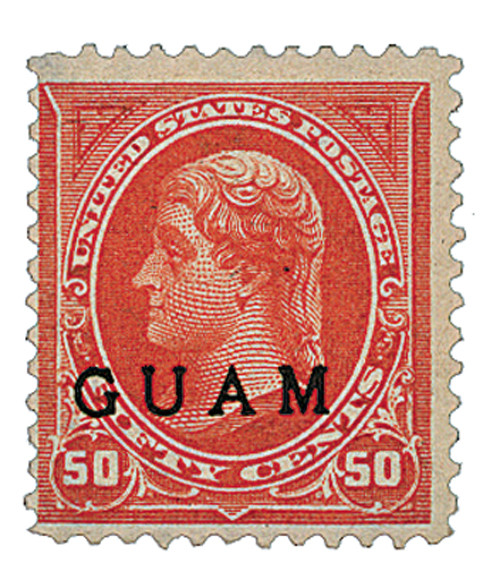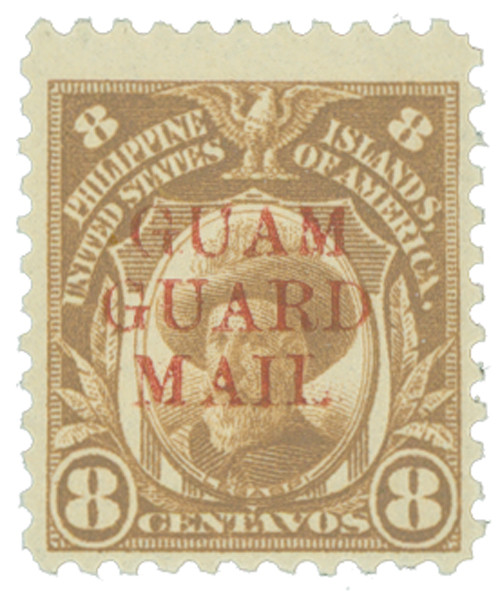
# G11 - 1899 50c Guam - overprint, orange
Affordable Guam Overprint
Is 100 Times Scarcer Than U.S. #275!
When the U.S. gained possession of Guam after the Spanish-American War, U.S. stamps, like #275, were overprinted “GUAM” for use on the island from 1899 to 1901.
Although over one million #275 stamps were issued, only 4,000 were overprinted – that’s less than 1%. So #G11 is 100 times scarcer than #275! And many of these stamps were used... so they’re especially rare unused. Supplies are limited.
Guam Stamps –
Scarce and Historic
Guam is located to the south of the Mariana Islands and to the east of the Philippines. It is a tiny country of only 212 square miles, and a population of 120,000. About 1/6 of the people of Guam are members of the U.S. military and their families. The native inhabitants of the island are known as Chamorros, who also settled throughout the Philippines. The rest of Guam’s citizens are of mixed descent. In 1521, the Spanish explorer Ferdinand Magellan led the first European expedition to Guam. Spain claimed Guam as its colony shortly thereafter. It was not until 1668, however, that Spain actually took control of Guam.
Affordable Guam Overprint
Is 100 Times Scarcer Than U.S. #275!
When the U.S. gained possession of Guam after the Spanish-American War, U.S. stamps, like #275, were overprinted “GUAM” for use on the island from 1899 to 1901.
Although over one million #275 stamps were issued, only 4,000 were overprinted – that’s less than 1%. So #G11 is 100 times scarcer than #275! And many of these stamps were used... so they’re especially rare unused. Supplies are limited.
Guam Stamps –
Scarce and Historic
Guam is located to the south of the Mariana Islands and to the east of the Philippines. It is a tiny country of only 212 square miles, and a population of 120,000. About 1/6 of the people of Guam are members of the U.S. military and their families. The native inhabitants of the island are known as Chamorros, who also settled throughout the Philippines. The rest of Guam’s citizens are of mixed descent. In 1521, the Spanish explorer Ferdinand Magellan led the first European expedition to Guam. Spain claimed Guam as its colony shortly thereafter. It was not until 1668, however, that Spain actually took control of Guam.













